Philodendron spp.
Philodendrons provide a gateway to growing rooms full of houseplants for many aspiring indoor plant enthusiasts, including myself.
For most of my gardening days, I’ve focused on outdoor plants, but when my partner opened a yoga studio that needed some lush greenery as fast as possible that could also handle low light conditions, I turned to philodendrons.
We weren’t disappointed, as they grew to at least 20 feet long, with vines meandering around the art on the walls and up over the curtain rods on the other side of the room within a couple of years.
With close to 500 known species in the Philodendron genus, these tropical Central and South American natives tolerate low light conditions and neglect, so even the most novice growers will have no problem getting great results.
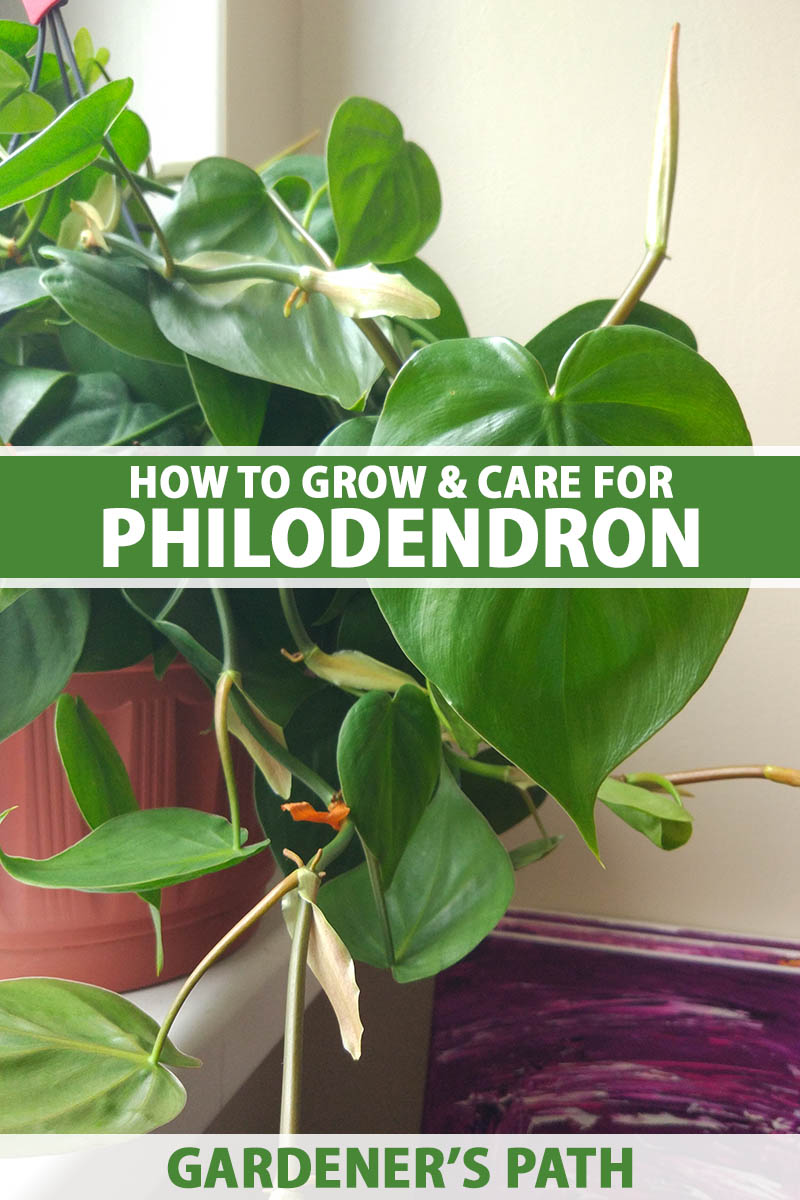
We link to vendors to help you find relevant products. If you buy from one of our links, we may earn a commission.
With their ease of care and aesthetic appeal, it’s no wonder these houseplants are so popular, often being used not just in homes but also in commercial offices, lobbies, or shopping malls.
And if you live in USDA Hardiness Zones 9 to 11, there are many varieties that will grow in your outdoor garden, too.
Read on to learn how these adaptable plants can add elegant charm to your home or garden while providing tropical interest in low-light situations.
What You’ll Learn
What Is a Philodendron?
Being one of the largest genera in the Araceae family, the physical characteristics of philodendrons vary from species to species, including their leaf shape and size, mature size, growth habit, and foliage color.
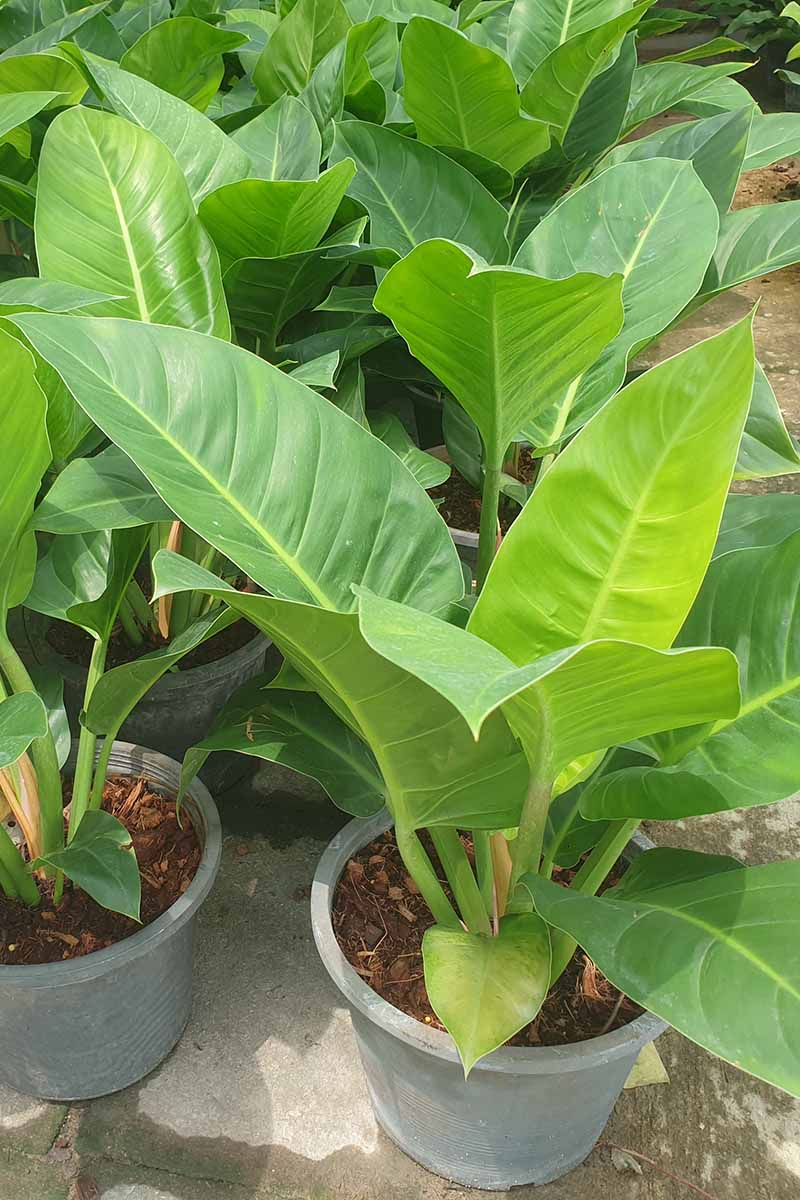
Some of the traits they do often have in common are imposing, often lobed leaves, long aerial roots, parallel leaf veins, and leaves that undergo similar patterns of change as they grow.
Leaves usually emerge with a heart shape as seedlings. As the plant matures, they take on different shapes ranging from large hearts, lily pads, and arrowheads to deeply lobed foliage or leaves filled with holes or slits.
The name “philodendron” is of Greek origin, from philo, meaning love and affection, and dendron, meaning tree. This aptly describes the majority of the species in the genus as vines or climbing plants that love to grow on or up trees.
In their natural habitat, larger specimens can engulf entire trees. When cultivated indoors, however, they aren’t nearly as prolific – so don’t worry about them swallowing your other plants… or your house!
You do want to be careful they don’t dig into your walls, however, which I learned the hard way. And if they do grow a bit too big for your tastes (or available space) they respond well to pruning. Read on to learn more about this.
There are two basic types of philodendron: climbing varieties and self-heading non-vining varieties.
Self-heading varieties usually have leaves spaced so close together that the stem can hardly be seen until some of the leaves (typically older ones) fall off.
To support themselves, self-heading species tend to develop aerial roots. These roots grow from the stem towards the ground and serve as more of a support structure than a means to absorb water and nutrients.
Climbing or vining varieties typically grow up trees in their natural habitat, either starting their life in the tree or germinating in the soil and stretching towards a trunk to find support, growing up to the canopy.
Cultivation and History
Philodendrons were first introduced to Europe by French botanist Charles Plumier in 1693.
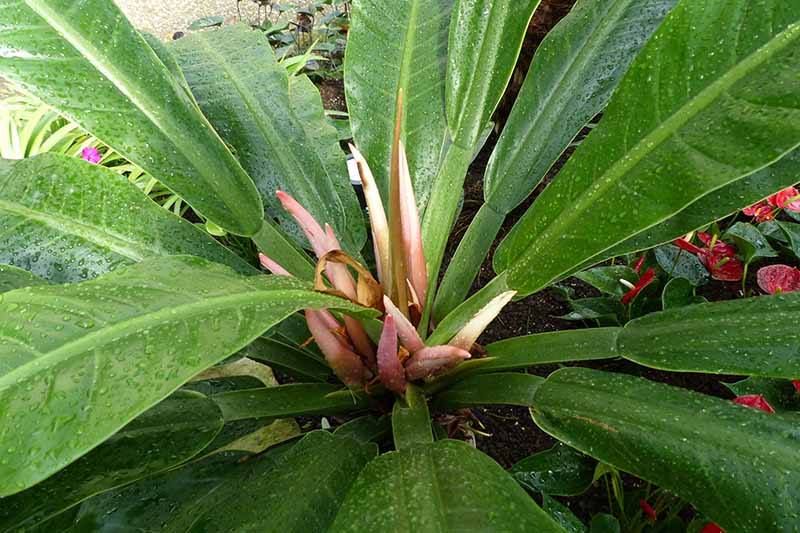
As expeditions to the New World tropics became more common in the 17th and 18th centuries, more and more species were discovered.
By 1860, Austrian botanist Heinrich Schott had described 135 species, and today there are at least 489 known species.
Growth patterns of philodendrons are categorized into three groups:
- Epiphytic – growing on other plants
- Terrestrial – growing from the soil
- Hemiepiphytic – growing both on other plants and from the soil
Epiphytes typically grow on a host plant, absorbing moisture and nutrients from air, rain, or surrounding debris. Aside from sometimes engulfing trees and shading them out, epiphytes usually do no harm to their hosts.
Terrestrial plants are the ones you’re probably most familiar with, which grow only from the soil.
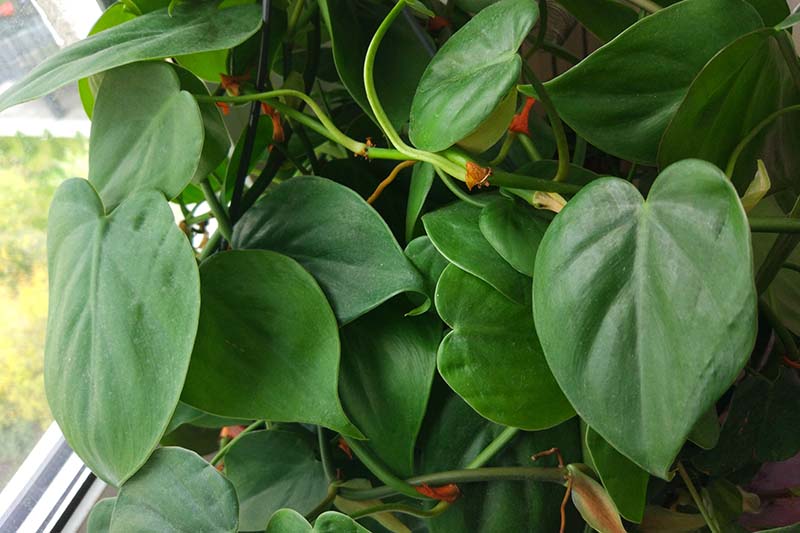
A hemiepiphyte spends part of its life cycle as an epiphyte and part as a terrestrial plant, and species with this growth pattern are further broken down into primary and secondary categories.
A primary hemiepiphyte disperses its seeds in the tree canopy – or birds and other animals help – and there they germinate and latch onto the tree. As the plant gets older, it sends out roots that grow towards the forest floor, eventually reaching the soil where they can absorb moisture and nutrients.
Secondary hemiepiphytes begin as rooted vines that stretch towards the canopy of a host tree. Later, some species may totally detach from the ground and live as full epiphytes.
And here’s an interesting fact: unlike most other epiphytes, philodendrons don’t usually die if they fall off their host. Being unusually tough and stubborn, they can simply root into the soil, or immediately recapture the same or grasp another host and start their upward climb again.
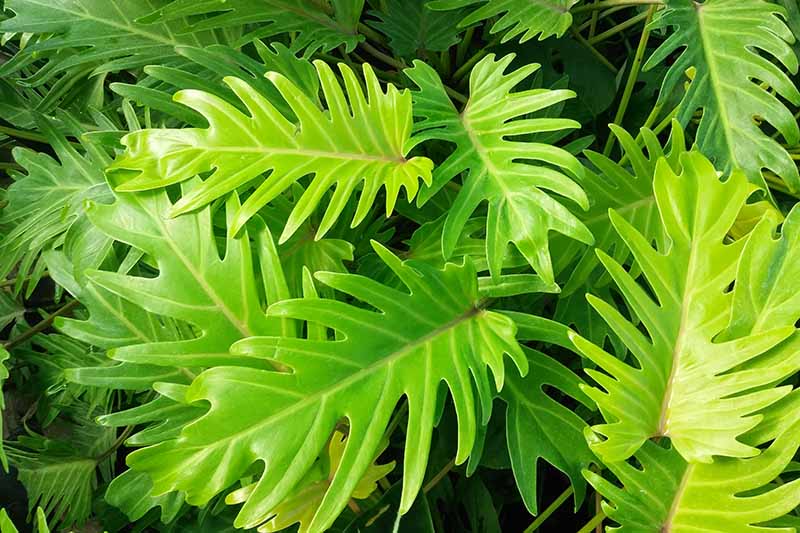
Most commonly grown philodendrons are very adaptable and do well outdoors year-round in Zones 9 to 11, though the popular heart-leaf philodendron (P. hederaceum) is only suited to growing outside in Zones 11 and 12.
Of course, the plants also do very well indoors in all climates. Despite preferring more humid conditions, they’ll grow just fine in lower humidity areas as well.
Whether cultivating them indoors or out, it’s good to understand the natural growing pattern of your particular plant. Species that are epiphytes will require less soil but may require a host plant to grow.
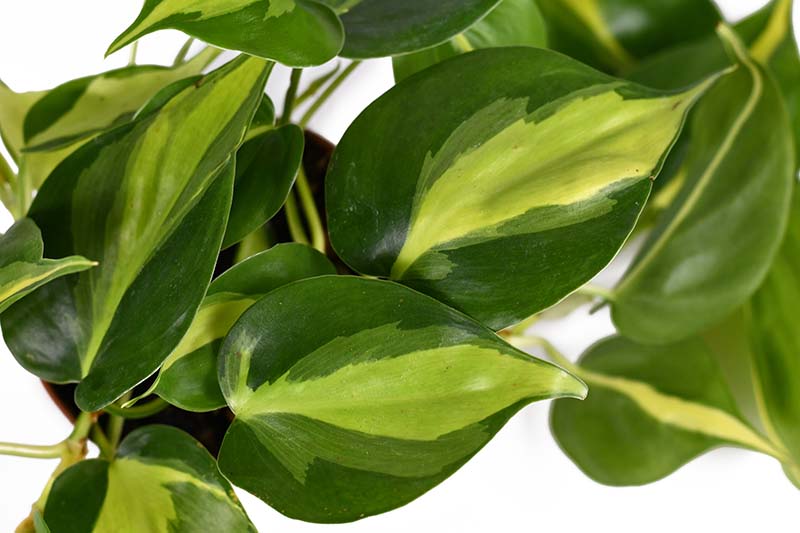
The most commonly grown philodendrons are secondary hemiphytes and these may require some sort of support, such as wall hooks or a trellis.
They can also be left to trail over the side of a planter, and can be trimmed regularly to the desired length. Cuttings can even be used to propagate new plants, as described below.
Philodendron Plant Propagation
Philodendrons are best propagated via cuttings, air layering, or divisions.
From Cuttings
Philodendrons are most easily propagated by cuttings.
To take tip cuttings, cut two to three inches from the end of a stem. You may also cut off a 10-inch or longer piece and then cut it into two- to three-inch sections.
Cuttings should be made directly at or under a leaf node. The leaves around the bottom node can then be removed in preparation for rooting.
For self-heading species, I’ve had more success with stem cuttings taken directly at the leaf node that include a bit of the bulge of the node without cutting it off completely.
A Note of Caution:
Philodendrons contain a toxic substance called calcium oxalate. If ingested, this may cause burning and swelling of the lips, throat, and mouth.
It may also cause nausea, vomiting, difficulty swallowing and breathing, and other unpleasant symptoms.
Juices from the plant may also irritate the skin of some people, causing reddening, itchiness, and inflammation. Gloves should be worn while making cuttings and plants should be kept out of reach of toddlers and pets.
If a pet or person ingests any part of a philodendron vomiting should not be induced and medical attention should be sought immediately.
The bottom part of each cutting, furthest from the growing tip, should be placed immediately in clean water.
Choose a container large enough to hold at least a cup of water, so that the water doesn’t evaporate too quickly.
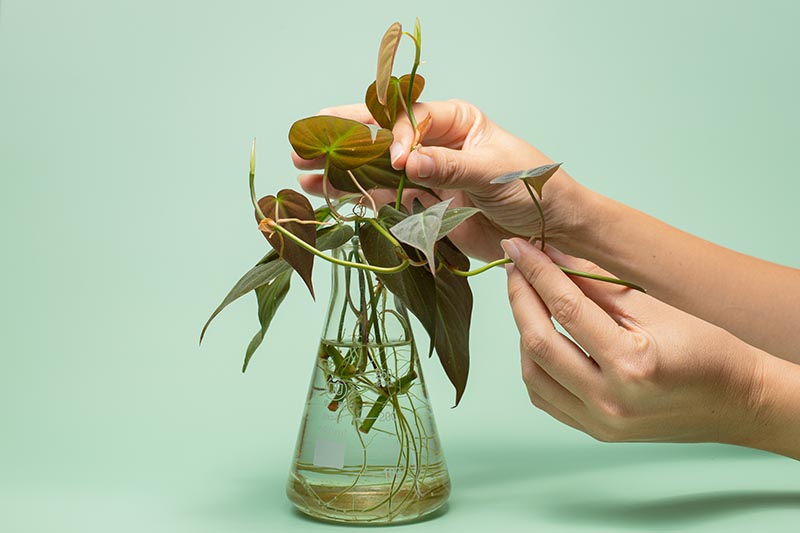
The cutting should be submerged about halfway up the stem, or to just before the first set of leaves. Replace the water every few days, or whenever it becomes murky. Roots will typically emerge within a few days.
When the roots are a couple of inches long, you can transfer the cuttings to four-inch pots filled with the potting mixture described below in the Soil Needs section.
They should remain in these pots until fully established – you will be able to see roots coming out of the drainage holes. They can then be transplanted to larger pots as described in the Container Selection section below.
Throughout the rooting process, while in water and in small containers, keep cuttings in a location with a steady temperature between 70 and 75°F, with bright indirect light.

Ideally, they should also be kept at a high level of humidity. Try covering containers with a humidity dome like this, available from Amazon.
The DIY version of this is to simply cover containers loosely with a clear plastic bag.
Air Layering
To air layer a philodendron, select a healthy stem with no discoloration, disease, or insect damage. Remove any leaves that are within three to four inches above a leaf node on the stem.
Using a sharp, sterilized knife, cut a shallow one-inch slit vertically into the stem. Remove the outer layer of the stem all the way around, being careful not to sever the stem from the plant.
Apply just enough rooting hormone gel or powder to the exposed stem to cover it all the way around the area that has been cut and cover this area with moist (not wet) peat moss.
Secure the peat moss by wrapping it in plastic wrap, being careful to seal it in fully before tying it off.
When you can see new roots forming in the peat moss pocket, you can cut the stem below the rooting area and plant into a four-inch pot.
By Division
Divisions are a great way of propagating mature philodendrons.
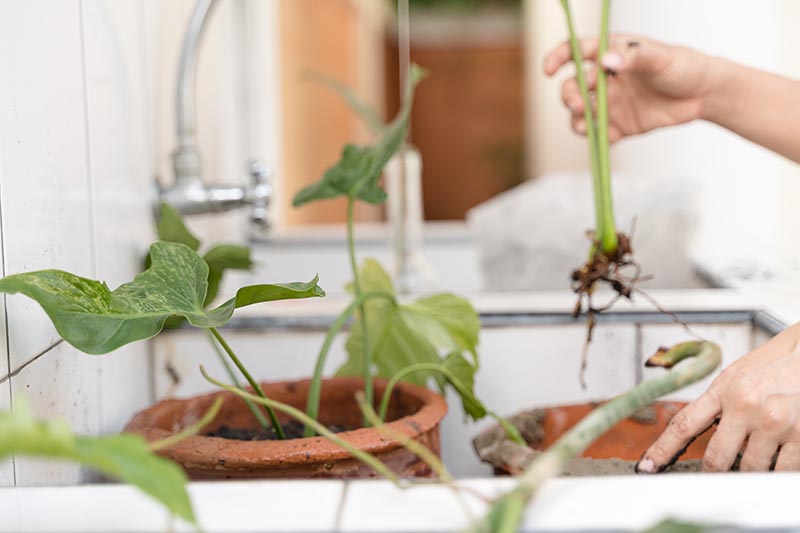
First, remove as much soil as possible from the top of the pot around the section where you want to take your division, to expose the root system.
Then, using a sharp, clean knife that’s big enough for the job, and being careful to keep a portion of the developed roots intact, cut out a section with at least two shoots.
Carefully remove the mass of roots from the soil without damaging the shoots, and transplant into an appropriately sized container as described below.
Alternatively, you can remove the plant from its pot and cut through the roots – remember to keep at least two shoots on each section.

To kick-start growth, fertilize with a transplant fertilizer like this one from Bonide that’s available from Amazon, following the instructions on the package.
How to Grow Philodendron Houseplants
Philodendrons will often survive even in sub-optimal conditions. However, if they are cared for well, you’ll be rewarded with continual robust new growth.
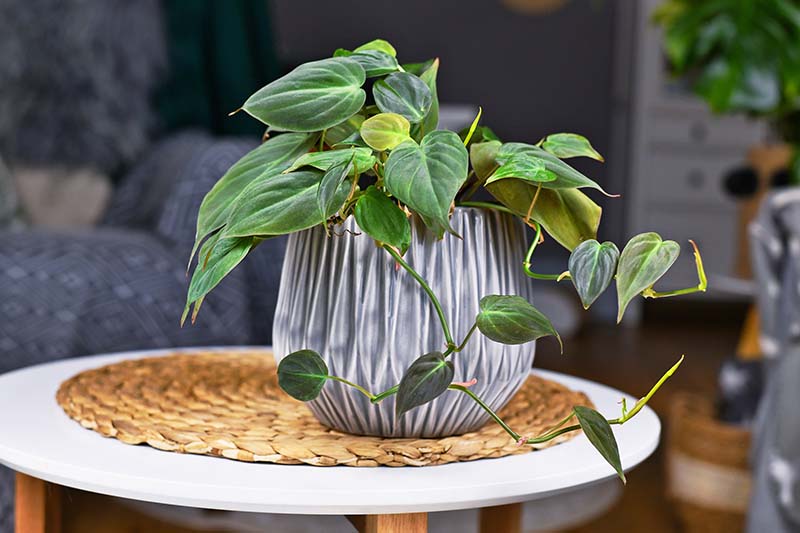
As with any plant, it’s all about finding the proper balance of water, nutrients, climate, and sunlight.
Soil Needs
One of the most important factors in caring for a philodendron is moisture management.
These plants prefer well-draining, consistently moist but not waterlogged soil. When the soil is too wet, the roots may have difficulty absorbing nutrients and oxygen – and harmful bacteria and fungi can take hold more easily.
Philodendrons prefer a pH level of 5.0 to 6.0, which is slightly acidic.
A combination of one part regular potting soil, one part peat moss, and one part perlite will make for the perfect slightly acidic, well-draining growing medium.
Container Selection
Choosing the right size container is also key in preventing plants from becoming waterlogged.
It’s a common rookie mistake to choose a large pot, thinking the plant will grow into it. Your container shouldn’t be so small that the plant is root bound, but it shouldn’t be so big that it doesn’t use the water in the soil fast enough either.
A good rule of thumb is to make sure plant roots occupy about a third of the pot. This will give it enough room to grow while preventing root rot, a fungal disease that favors wet conditions and oversaturated soil.
If growing outdoors, make sure the container has drainage holes for excess rainwater to drain out, and avoid planting in heavy clay soils.
Water
Watering should only be done when the top two inches of the potting mix is dry.
I like to get a sense of how moist the soil is further down with a moisture meter like this one, available from Arbico Organics. But you can also just poke your finger in.
Your watering schedule will vary depending on the size of your plant and the growing season. If your plant is happy, the leaves will be bright and perky.
If the leaves become droopy or start to turn yellow or brown, on the other hand, you could be underwatering. And if leaves are yellow, it may be the former or latter.
At times, it may appear that the leaves are drying out even in moist but not overly soggy soil. If your philodendron’s roots are in good shape, healthy and free of root rot or root burn, there may be a humidity issue.
If this is the case, your plant will benefit from some extra humidity, whether this be from a humidifier, grouping houseplants closer together, or positioning the container on top of a water-filled pebble tray.
Fertilizing
Philodendrons are generally medium to heavy feeders. As mentioned, even without a regular nutrient boost, your plant will probably survive – though it may not grow as prolifically as it could.
It will benefit from a monthly helping of nitrogen-rich fertilizer during most of the year, though a solution diluted by half is often recommended, erring on the side of caution to prevent fertilizer salt buildup or nutrient burn.
AgroThrive™ General Purpose Fertilizer
AgroThrive™ General Purpose Fertilizer from Arbico Organics is a great option.
Most philodendrons have a growing season and a dormant season. During the cooler winter dormant season, they require fertilizer only every six to eight weeks.
Light
The light requirements of philodendrons vary depending on species.
Indoors, most philodendrons prefer bright, indirect natural light, which is often described as “partial shade.”
For many species, south or west facing windows with a light curtain filtering the sunlight are perfect. If natural light is unavailable, grow lights can be used.
Outdoors, philodendrons do well in partially shaded areas under trees. Full sunlight may cause the leaves of most species to become yellowish or develop sunburn spots.
Variegated cultivars will need a little more light than non-variegated members of the same species.
Climate Needs
As tropical plants, philodendrons prefer temperatures between 70 and 85°F.
They do not tolerate nighttime temperatures less than 55°F well, though they may survive short periods with temperatures as low as 36°F. They prefer 60 to 70 percent humidity.
Keep your plant away from doors or open windows when the outdoor conditions are not within the above parameters to prevent drafts and sudden changes in temperature.
Growing Tips
- Only water as needed, when the top two inches of soil become dry
- Provide bright, indirect sun
- Use a high nitrogen fertilizer diluted by 50 percent
- Adjust water and fertilizer according to growing season
- Maintain 70 to 85°F during the day and keep well out of cold drafts
Pruning and Maintenance
Although philodendrons don’t require pruning, they don’t mind it either, allowing you to shape your plant to suit your space.
Pruning can also be done if your plant is starting to look leggy or the lower leaves are dropping off.
It’s best to cut above a leaf node to encourage branching and to create a more full appearance. The pieces that you’ve cut away may then be used to start new plants, as described above in the section on propagating cuttings.
Philodendron Species and Cultivars to Select
With so many species and varieties of philodendron, there’s a plant for pretty much any space, from small tabletop centerpieces to large specimens for the patio or living room.
Here are a few favorites:
McColley’s Finale
P. x ‘McColley’s Finale’ is a relatively small plant with green, orange, and red foliage.
Leaves start out orange when they are first forming, progressing to a bright red, and finally turning dark green as they mature.
Plants prefer indirect or filtered sun or partial to full shade. With a mature spread of 18 to 36 inches, they grow to a height of 12 to 36 inches.
Heartleaf Philodendron
P. hederaceum is a climbing species often confused with its lookalike, pothos.
One of the most common types due to their ease of care and rapid growth, more often than not, they are grown in baskets with vines that spill nicely over the edge in a lush, jungly display.
Plants like bright indirect light, but not direct sun.
Red Emerald/Blushing Philodendron
P. erubacens is a climbing species famous for its wine-colored stems and flowers.
Its leaves are heart-shaped with a tinge of red around the edges.
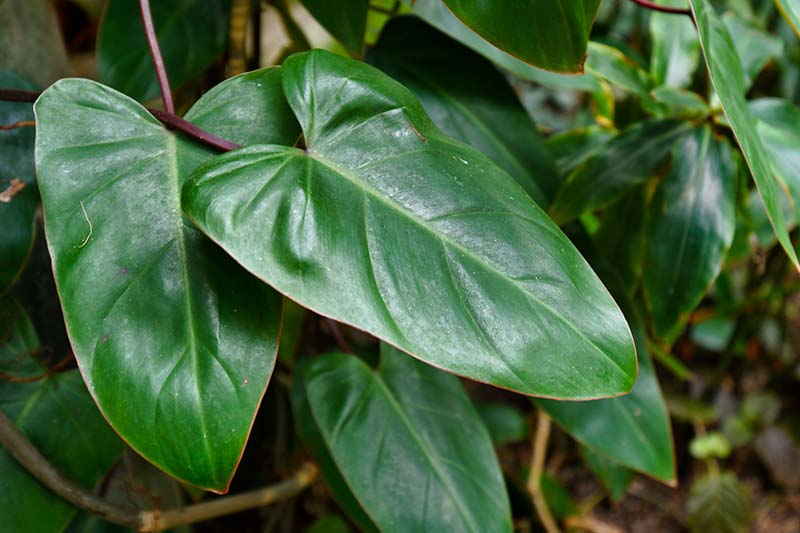
This species likes less light than most philodendrons, and it does well in near-full shade.
As a houseplant, it may reach around 12 feet long at maturity, but it can grow to around 60 feet outdoors in ideal conditions.
Selloum/Tree Philodendron
P. selloum (syn. P. bipinnatifidum) are often confused with the related Monstera deliciosa, with their finger-like lobed leaves.
However, selloums do not have fenestrations (enclosed holes) on their leaves like M. deliciosas does, even as the plants mature.
These types reach 10 to 12 feet in length or height with a mature spread of 12 to 15 feet, and they will grow in full sun or partial shade.
You can find plants in #3 containers available at Nature Hills Nursery and from Plants By Mail.
Read more about growing tree philodendrons here.
Birkin
P. x ‘Birkin’ is an up-and-coming hybrid variety with compact, rounded leaves that have a dramatic pinstripe pattern.

While this is a vining or climbing species, unlike other philodendrons, ‘Birkin’ grows at a slow pace and is fairly small.
As such, support poles are rarely required, especially when it is cultivated indoors.
Plants require partial shade and grow to eight to 12 inches in height.
‘Birkin’ plants are available in from Fast Growing Trees.
Want More Options?
To explore more beautiful species and cultivars of this plant genus, be sure to check out our supplemental guide, “41 Exceptional Philodendron Varieties.”
Managing Pests and Disease
Philodendrons are rarely affected by insects. The most common infestations include mealybugs, scale, and spider mites.
There are two diseases prevalent among philodendrons – root rot and bacterial leaf spot, both of which can be caused by waterlogged, warm soil.
Mealybugs
Mealybugs are easy to spot, leaving a white, fluffy residue on the stems and leaves of plants. They suck juices from plants, weakening and even killing them in severe cases.
Mealybugs also secrete honeydew, a substance that encourages fungal disease.
To control these pests, wipe them off with a paper towel moistened with rubbing alcohol, and apply neem oil according to package directions.
Read more about combating mealybugs here.
Scale
Scale insects are related to mealybugs and look like little white or brown specks. Like mealybugs, they suck the sap from plants.
These pests can also be treated with the alcohol-moistened paper towel method, followed by an application of neem oil
You can find neem oil as concentrate or ready-to-use spray available at Arbico Organics.
It may take several applications to rid your plants of the pests, so keep a close eye out for a resurgence.
Spider Mites
Spider mites will also suck the life out of your plants.
Small yellow or discolored spots on foliage and white webs on stems and leaves are a sure sign of a spider mite infestation.
You may also see the actual mites, which are usually brown or red, hiding on the underside of leaves.
As with the previous pests, wipe them off and spray with neem oil.
Get more tips on controlling spider mites here.
Root Rot
This is a disease of overwatered plants that will often manifest as yellow or brownish leaves that eventually fall off.
To the untrained eye, these symptoms may be seen as evidence of a lack of water, and newbies often further exacerbate the problem by adding more water.
Root rot is caused by fungi (Rhizoctonia spp. and Pythium spp.) that attack the plant’s root system, preventing the uptake of moisture and nutrients.
Badly infected plants may not be able to recover and you might need to dispose of them to prevent the infection from spreading to your other houseplants.
If your plant is infected, the best thing to do is prevent further spread of the disease.
Unpot, remove any slimy, rotten portions of the roots, and transplant into fresh soil that drains well, in a container with adequate drainage holes that isn’t overly large.
Although there is limited information available about the strategy, I’ve found with other plants that watering with three percent hydrogen peroxide until it shows signs of recovery helps a lot.
It makes sense that this would work, since hydrogen peroxide is a natural fungicide.
Find more tips on preventing and treating root rot here.
Bacterial Leaf Spot
Caused by Erwinia bacteria, leaf spot spreads in wet conditions and may appear as blackened lesions on foliage. If the lesions dry out, spots may turn into holes.
Whole leaves may be infected, causing them to drop from the plant. And as an added bonus, another symptom of this disease is an unpleasant fishy odor.
To prevent this type of infection, avoid overhead watering and water directly at the soil level instead. Clean up any fallen leaves promptly and dispose of them.
Best Uses
Self-heading philodendrons are often used for landscaping where the climate allows, making beautiful and unique specimen plants for a variety of situations, depending on the overall size and sun requirements.
Indoors, smaller plants can be used as tabletop decorations while larger ones are best placed in containers at floor level.
Vining philodendrons can be placed in hanging baskets or can be trained to grow on a trellis as a wall covering. They work nicely as vine components of multi-plant containers.
Quick Reference Growing Guide
| Plant Type: | Vining or self-heading evergreen perennial | Foliage Color: | Burgundy, green, orange, red, variegated |
| Native to: | South and Central America | Soil Type: | Rich, sandy loam, loose |
| Hardiness (USDA Zone): | 9-12 (outdoors) | Soil pH: | 5.0-6.0 |
| Exposure: | Bright, indirect light, shade, depending on species | Soil Drainage: | Well-draining |
| Height: | 1-20 feet, depending on species | Uses: | Ornamental houseplant, specimen, wall covering, borders |
| Spread: | 1-6 feet, depending on species | Order: | Alismatales |
| Water Needs: | Moderate | Family: | Araceae |
| Maintenance: | Low to moderate | Genus: | Philodendron |
| Tolerance: | Low light, low soil fertility | Species: | brasil, erubescens, hastatum, hederaceum, micans, selloum |
| Common Pests: | Mealybugs, scale, spider mites | Common Diseases: | Root rot, bacterial leaf spot |
Fill Your Den with Philodendrons
Whether you’re gardening in a tropical climate or you live somewhere near the Arctic Circle, philodendrons offer many possibilities for brightening your garden or home with lush foliage.
From heart-leaved light green vines that will stretch across your living room ceiling, to compact, pinstriped dwarves, to the massive, finger-like leaves of selloum, philodendrons are a must-have for indoor and outdoor living spaces.
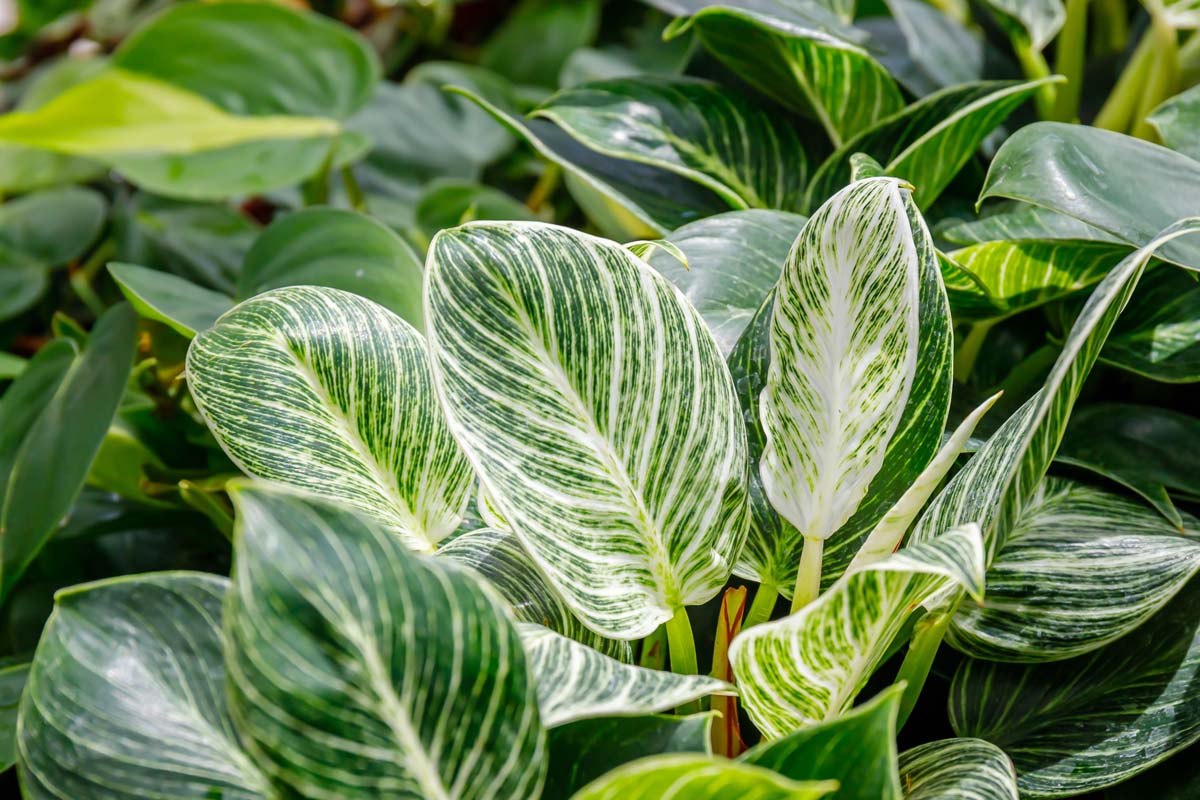
Are you growing philodendrons? Let us know in the comments section below and feel free to share a picture!
And for more information about growing houseplants, check out these guides next:
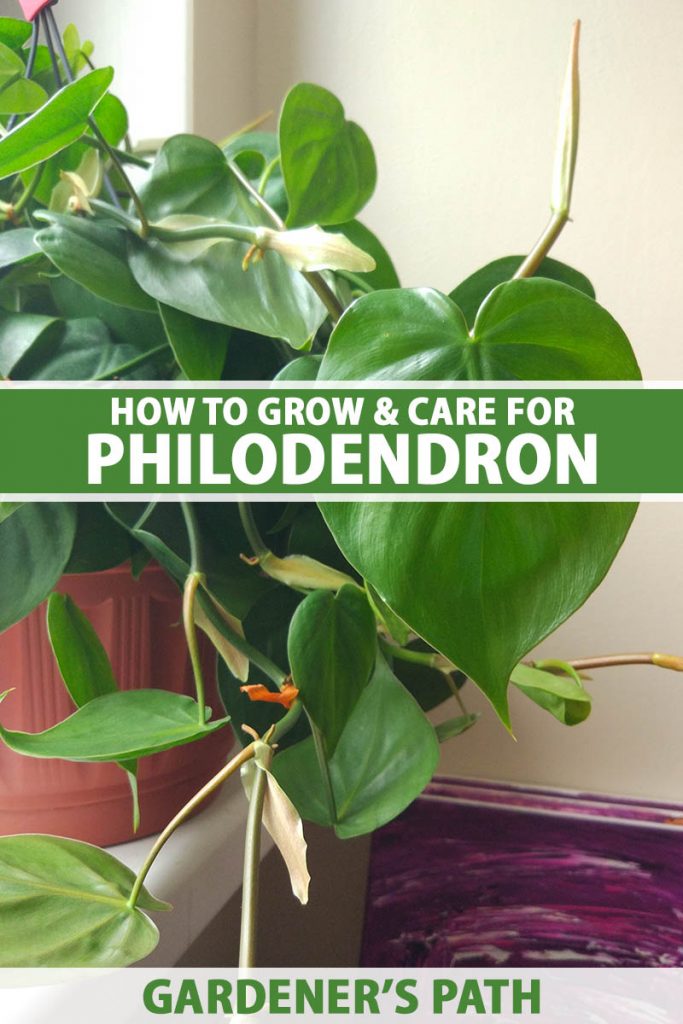

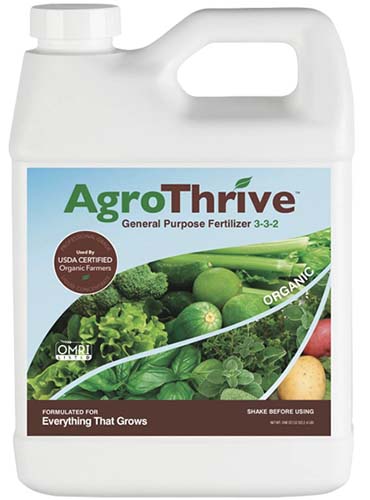

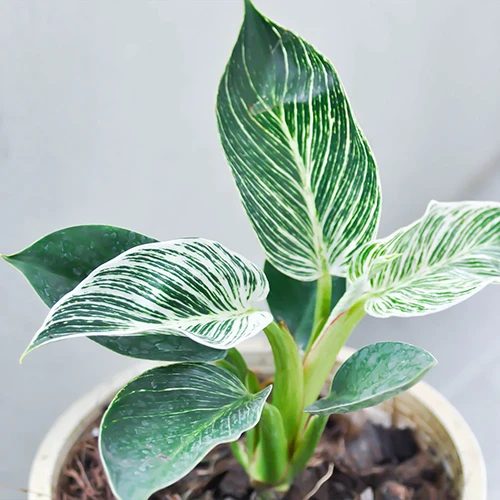
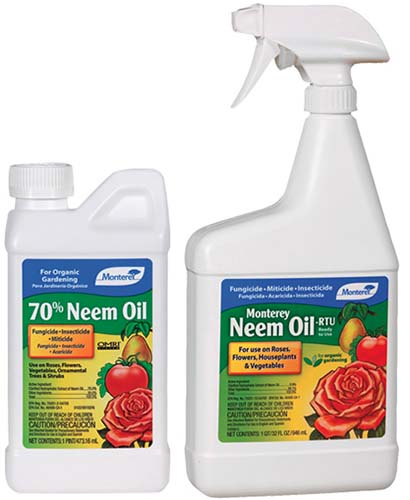

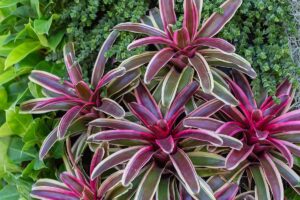
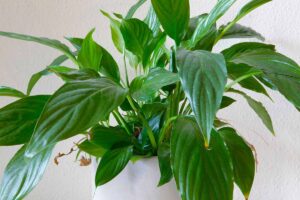
Two questions:
1. In video, I’m trying to capture the way the hanging philodendron is (happily) growing down to the floor. Dilemma is I don’t want to cut the long stems off. Ideas, please?
2. What are the hard, round, thorny balls falling from a neighbor’s tree, and what is the tree name??
Thanks for any and all feedback. God bless and keep you safe!
Sorry your photo and video attachments didn’t work, Linda. Perhaps you’d like to try to upload the photos again? To answer your first question, if the philodendron is growing happily, you don’t have to cut the long stems off if you don’t want to! My six-year-old plants have some very long, trailing vines at this point that I arrange in a coil on the floor, or across a bookshelf – get creative with the arrangement, and dust carefully so you don’t break them. As an alternative, if they really are too long to be manageable, you can clip these and… Read more »
Dear Allison Sidhu,
Thank you so very much for your response!! It was beyond attentive. I’m going to follow your idea to just roll with the happy, long stems for now (which is what I was secretly hoping you’d assure me was ok). And, I plan to look into the Sweet Gum tree, it’s the best and only possibility I have at the moment. Sorry about the technical problems with the media, but happy to say you nailed it in spite of them! God bless you and keep you safe.
You’re welcome!
Need help with Philodendron plant. I’m trying to keep it alive. Some of the leaves yellowed, crunched and fell off. When I see brown on leaves I clip it. I’ve switched it from living room to dinning room because sun comes from the bk of my house more. Wherever it sits, I’m getting the same results. The plant was given to me in April 2023. From then to July it should be bigger. Due to some leaves dying and me clipping brown and yellow parts of, it’s like I’m starting over with a baby plant. It’s stills growing I see… Read more »
I’m not sure if you moved it into more sun or less, but these plants actually tend to do best with indirect light! Ensure proper drainage as well, and don’t be afraid to repot if necessary. A rootbound plant or one growing in depleted soil or a container without good drainage won’t do well.
OOPS! Here are the video and photo attachments.
I have successfully propagated golden pothos. I got the cutting from a trimming and look how beautiful and lush they are now. In summer, these are very sensitive to sun so I bring them in for most of the day and bring them out at night as they need well-circulated air. Thanks for this very informative article.
Hi Vince, thanks for sharing! Looking very beautiful indeed, nice work! You’ve clearly nurtured them well. Glad you liked the article.
Hiya Trent, I have a burning question about some a philodendron white princess I have at home. I recently received it in the mail, and I’m wondering whether I could split it somehow.
Could you also please tell me if those weedy looking roots are normal for these plants? I’ve never owned one before!
Thank you so very much, it is so hard to find information online about these plants!!!
I bought a philodendron in 1980. I still have it 41 years later! How long does a philodendron usually survive?
Wow me too! My Monstera Philadendron is 37 y/o, indoors. Name: Robert Plant. Huge, beautiful till 6 mos. ago he got root rot! He had very few live roots left, baaad shape. Did EVERYthing by the book to save him, had to cut a bunch away. He survived, thank goodness he’s sprouting new leaves.
This is the issue I’m having I think. It was given to me April 2023. Then to July 2023 it should be bigger and should see progress. It’s still growing, there’s leaves sprouting out the dirt right now. But sometimes the tips of leaves turn yellow n brown, I clip it off. The process repeats and it just looks like I’m starting fresh with a baby plant. One of the huge hanging leaf yellowed I cut it off today. There’s one more big long leaf, others are small. I need help. I don’t know much about plants or re potting… Read more »
New growth is a good sign! Too much sun may be the culprit if you’re seeing repeated tip burn, possibly paired with underwatering. Hope the tips in our guide are helpful. Good luck!
Hi my Philodendron Congo has brown patches on the pointy end of the leaf, what can I do to help my lovely plsnt
Tip burn can be caused by a lack of water in a sunny spot, or an overabundance of fertilizer. You can clip away the damaged leaves, and be sure to water whenever the soil is dry a few inches down. If the issue persists, it may also be due to the type of water that you used. Instead of using tap, try distilled water instead. Hope this helps!
Can you please help me identify this plant? It was given to me by a neighbour as one leaf in a seedling pot in 2009 and I now I have it in various pots. Is it a Peace Lily or Philodendron or ??? The stems/branches are quite thick and some get very long. The flowers look closer to a Peace Lily than Philodendron but after googling I’m suspecting its a Philodendron, I’d just like confirmation if possible. Thank you